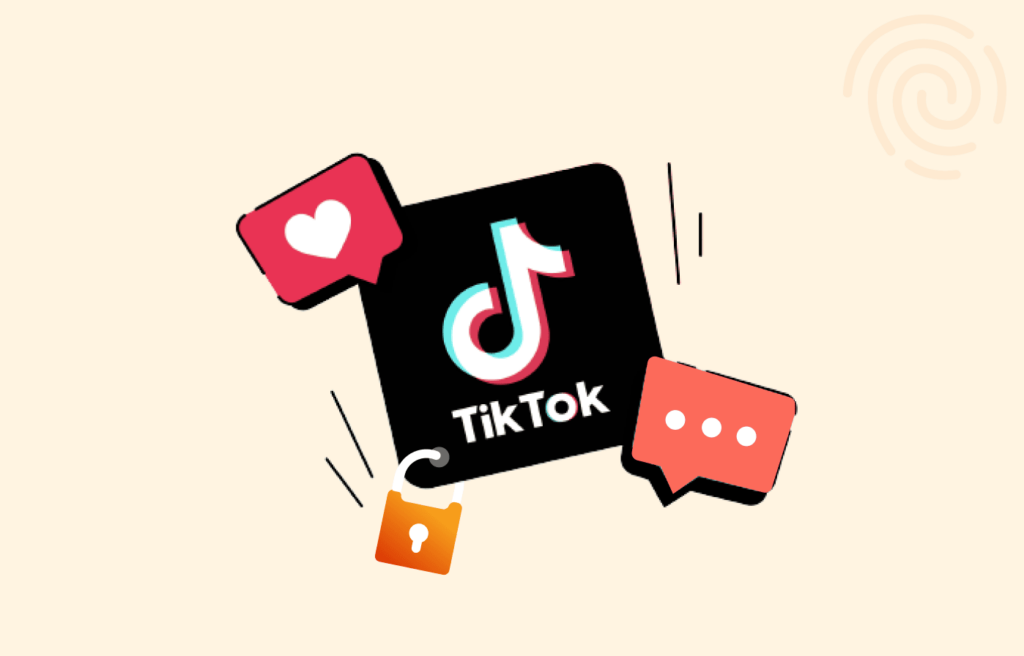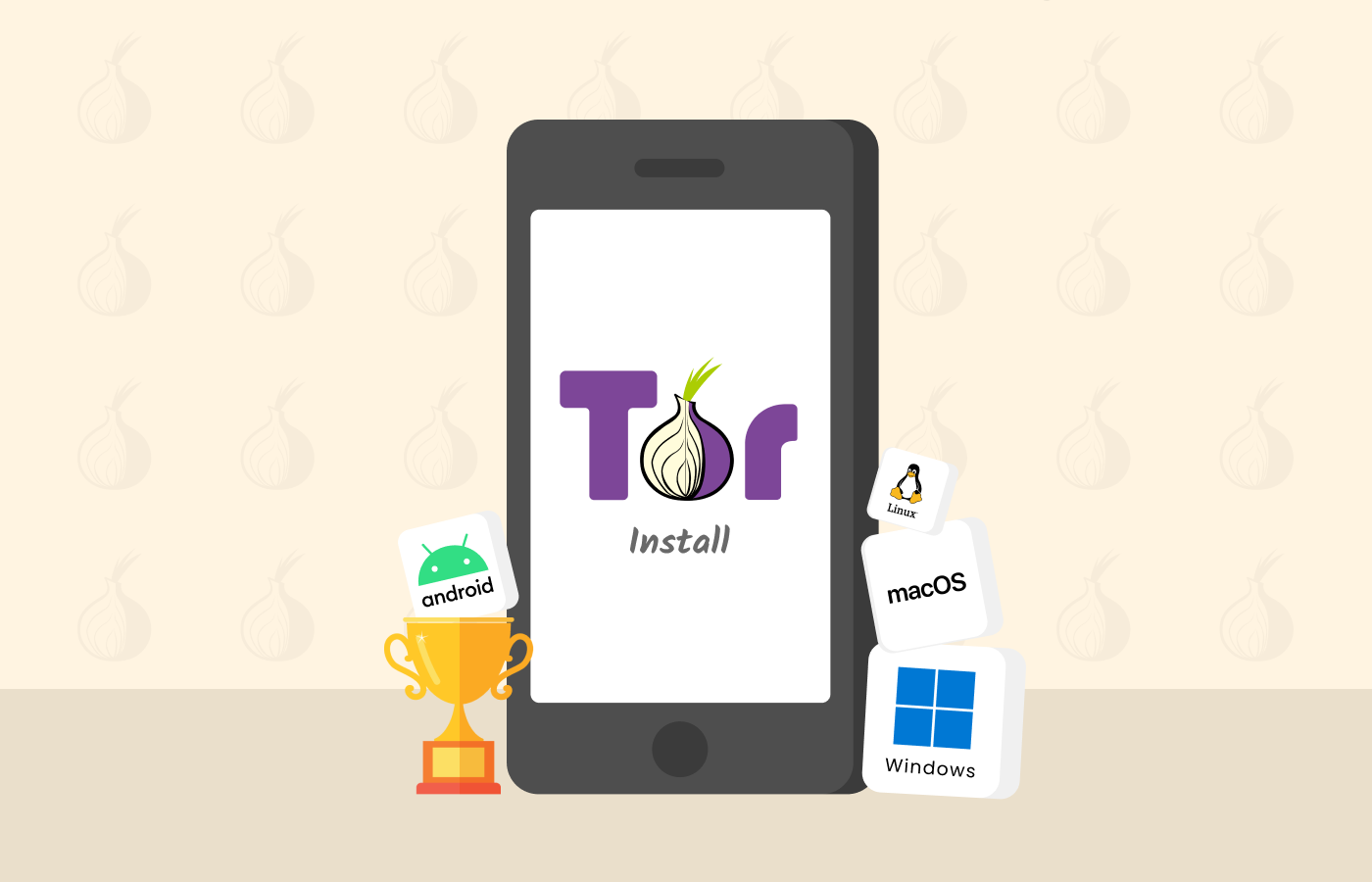TikTok is unsafe for kids. But then, nothing on the internet is 100% safe for kids, simple as that.
Kids on the internet must have parental guidance, period. This is even more true in a world where some consider Harry Potter a corrupting influence on the world’s children. So precisely, it’s not that TikTok is particularly dangerous for kids. Even Disney Plus will never be 100% safe for children, depending on your safety standards.
Once we’ve addressed the elephant in the room, we can move forward and deal with this subject more nuancedly. You can do plenty to reduce your kid’s exposure to the risks of TikTok. In this article, we will guide you through the process. So, read on and discuss things in detail.
What is TikTok anyway? Why do children like it so much?
In a world dominated by social media or references thereof, TikTok is the current talk of the town. As a result, it was the world’s top social media app (by download number) during 2020.
You can think of TikTok as YouTube for users with shorter attention spans. The idea of TikTok is to have its users release short videos (15 seconds, one minute, or three minutes long). In addition, filters and music are available for you to bring into your videos, and you can collaborate with other users in the network. So this is a medium where you need to get as much attention as possible in the shortest possible time.
This feature alone can tell you why younger audiences like it so much and want to access TikTok globally. For instance, the 10 to 19-year-old age group made up about a quarter of TikTok’s users last year. So it’s the largest demographic in this network and, therefore, very influential and the target for most content producers.
TikTok attractions for kids and teens
The first notable thing is the seemingly infinite stream of videos on offer in TikTok. So, at any point, you remain just one scroll or click away from the coolest video that will make your day. It can be a comedy skit, a dance challenge, or a song cover. Moreover, even recipes and pool-cleaning videos have been viral on this platform. So whatever makes you Tik (or Tok), you will indeed find it here sooner or later as you keep using the app.
And then, there are the high-profile TikTok users. Media influencers, celebrities, and even brands have TikTok accounts. As a fan, their TikToks allow you to interact with their favorite stars. And who knows? Your famous star could even notice you because of your interaction with a video! Funny comments and comment exchanges often end up being the idea for that next video everybody wants. That is part of the young TikTok culture, so many users aim to impact the platform in that way.
Briefly, TikTok is a popular platform facilitating and promoting interaction. It’s easy to use, offers almost endless content by practical standards, and allows immense customization to suit your personal tastes. And you can always enjoy getting likes, follows, shares, and all those magical features we’ve grown used to in every other social media platform.
So it’s clear why kids like TikTok so much – it’s a lot of fun! However, parents should remember that the same features that make it attractive to younger users also pose a security threat.
Are there any risks in using TikTok?

The internet is a recent development within the overall human experience, let alone social media platforms. We don’t know how social media affects supposedly well-balanced adults, not kids. However, the research points to some poisonous effects on a user’s mental health, such as increased depression and anxiety. Specific research on kids is still missing, but we shouldn’t expect any fantastic news on that front.
Social media can expose kids to misinformation, graphic content, and violence that they cannot assimilate correctly. These things will have an expected long-term effect on kids’ psychology. Unfortunately, TikTok also shares in those threats.
Let’s explore some of the risks that younger TikTok users may face in more detail.
Unfettered access to inappropriate content
As a TikTok content producer, the platform’s access to popular songs that you can include in your videos is your bread and butter. Unfortunately, those songs often include harsh cursing and explicit language. Also, adult themes are common in TikTok, so how a given creator dances, dresses, or behaves in a video could be utterly kid-unfriendly.
Yes, there is a “Younger Users” TikTok version that keeps mature content away from kids. But this filter is automated and, therefore, not perfect. As a result, inappropriate material can still quickly get into a “Younger user’s” TikTok experience. Every user can block or report any given account or comment on the platform, but TikTok is often accused of dragging its feet in that regard.
TikTok faced criticisms in the past because it allowed sexually explicit comments to show up on children’s accounts, which is a severe issue.
Likes, comments, followers, and addictive behavior
We’re mammals – evolution has hard-wired our biology to construe popularity as value. Every human being faces this temptation in any social media. So, the more likes you get (or followers, comments, or reactions to your comments), the more appreciated you feel.
This inherent social media feature can be hazardous for teenagers, as acceptance into “the group” plays such an essential motivation during that period. TikTok often features “challenges” for users to join. Teenagers flock to these invitations as they try to have a place in the TikTok community, whereas the challenges can pose a danger to them.
Let’s not forget that critical and rational thinking requires a maturation process that extends into your 25th birthday. Teenagers tend to be impulsive. The online attention they crave can push them to do things that they would never do in real life because peer approval is at stake –from their digital peers.
Cyberbullies and predators
Messages and contacts within TikTok are almost as important as the videos themselves. And they add a problem for kids: they set up a stage in which predatory messaging, cyberbullying, and online harassment can happen. A public TikTok account opens up a user to the attention and interaction with strangers (and this is worst for kids). Also, everybody wants their videos to get “likes,” and kids want it more intensely than other users. Again, this makes them vulnerable to safety risks and sexual exploitation.
Trolls and cyberbullies like to post rude or hateful messages on other people’s content. The user can reject any comment before it gets published, so that kind of message doesn’t have to go online, but the user will have to read it before making a decision. And that in itself can hurt a child’s mind.
Data security
It would seem that social networks go hand in hand with the worst possible choices in data security management. Unfortunately, TikTok is right there with the worst of them.
The company had to pay a 5.7 USD million fine in 2019 to deal with a data privacy complaint filed against it with the Federal Trade Commission — the company’s name at the time was Musical.ly.
Then, the following year (2021), TikTok attracted negative attention from the European Union (EU) as the latter scrutinized the app for collecting young users’ data.
After that, in 2021, the Irish Data Protection Commission looked at TikTok’s data collection methods. Another lawsuit appeared in the UK, accusing the app of unnecessarily collecting children’s personal data without explaining what happens to the data once it’s gathered.
What data is TikTok collecting?
Unsurprisingly, TikTok collects a large amount of user data. (Of course, data collection is any social media’s bread and butter.) The data goes to the platform’s commercial parties, including service providers and advertisers.
According to its Privacy Policy, let’s contrast the type of data that TikTok collects about you with the collection it performs on the Younger Users version. Unfortunately, what the company says and what it does look wildly divergent notions.
- Login information. Both types of users must have a username and password.
- Personal information. Both types of users must provide a date of birth. Regular users must also provide proof of identity or age.
- Contact information. Email and/or telephone numbers are needed in both cases.
- Profile information. Younger Users are not required to include any profile information.
- Device information. The younger users’ version collects device ID, IP address, web browser type, and version. The regular user version collects all that plus: user-agent, mobile carrier, time zone, settings, ad identifiers, model of your device, the operating system on your device, your network type, screen resolution and operating system, app and file names and types, keystroke patterns or rhythms, battery state, audio settings, and connected audio devices.
- Location. A younger users’ site includes a country only. A regular user’s physical location is characterized with the help of the IP address, the SIM card, and GPS data when available.
- App activity. A younger user’s video watches and general app usage data get recorded. Regular users also have preferences, a list of followers, and a list of following.
- User content. None of this is for younger users. For regular users, pictures, audio, and videos. Anything they create and upload and comment live streams and clipboard data.
- Contacts. In theory, all the contact information in the Younger User version is left alone. A regular user gets his phone contact list and Facebook contact list scanned and recorded.
- Payment information. Also, none of that is for younger users. Normal users need to provide the standard payment details where required.
TikTok Younger Users: how does it work?
Is the Younger Users version of TikTok satisfying what the company claims to do to protect kids? Let’s have a closer look at it to understand better.
Firstly, the TikTok Young User platform’s design barely prioritizes protecting minors. Instead, the Young User version is, but the regular TikTok stripped of some features, nothing more.
The crucial idea (at least from the legal requirement point of view) is that it collects a lot less information about younger users. The data includes name, birth date, username, and password. The TikTok Privacy Policy for Younger Users says it also collects device data like IP address, browser details, and geographical location. Also, time spent in the app, video watches, and general usage history.
So, is TikTok safe for an average or potentially troubled 10-year-old who wants to share videos with friends? We hear you ask.
The answer is no; it’s not very likely to be safe for that type of user. TikTok was conceived as a platform for adults from the beginning. And it remains so. But there are some children-friendly social media apps, like PopJam, in the market, tailored for young users.
So, how is TikTok protecting our kids?
There is a Younger Users version of TikTok, which is meant for users below 13. However, this development didn’t happen because of TikTok’s proactive attitude towards child protection. Instead, it happened because they had to comply with COPPA (Children’s Online Privacy Protection Act), which limits the types of data a company can collect on users under thirteen years of age. So, the social platform did this because it had no choice but to comply if it wanted to stay online within the jurisdiction.
Of course, there are no under 13 users signing up for TikTok, theoretically, correct? That would violate COPPA. But everybody knows that a kid who wants an account in TikTok or elsewhere can always provide a fake birthday. So, the Young Users version came online to deal with that situation.
Should TikTok security concern me?
The very mediatic former President of the US, Donald Trump, brought a lot of negative attention to TikTok, accusing it of being a Chinese spying tool. While you might prefer dismissing Mr. Trump’s declarations routinely as a matter of principle, in this case, he is not alone.
Many others besides Trump (some US agencies and Wells Fargo, the bank) have also been worried for a long time that ByteDance (TikTok’s parent Chinese company) includes some spying functionality on the TikTok app.
The app has been audited and researched to see if it was such a malicious piece of software. However, the investigators found nothing nastier than the awful things common in Facebook, Instagram, and other social media delivery systems. Yet, this doesn’t make TikTok a saint; ByteDance does surveillance over TikTok users in China.
Also, TikTok has a checkered history regarding privacy and security. For example, the app is used to monitor the contents of your clipboard every three seconds. In addition, the Younger Users version has been known to collect and store minor data illegally.
So, to answer the question succinctly, yes, you should be worried about TikTok and security. You should stay away from TikTok entirely if you can. The less social media you’re involved in, the better off you will be in terms of security.
TikTok and parental controls
The Younger User TikTok app’s security settings include three parental controls. The purpose is to help parents create a safer TikTok experience for their children. Each setting requires a passcode so that children can’t alter them behind their parents’ backs. The three parental controls are:
- Screen time management.
- Restricted mode.
- Family pairing.
Let’s examine each one.
1. Screen time management
Screen Time Management lets a parent decide how much time the child can spend on TikTok daily. The limits can be 40, 60, 90, or 120 minutes. Once users reach the previously specified limit, they must provide the passcode to keep scrolling. Or they can also keep using the app via the “Family pairing” feature.
2. Restricted mode
This option filters out mature or otherwise kid-unfriendly material. But unfortunately, since an algorithm decides what that is, this feature is far from perfect.
3. Family Pairing
This option gives parents more control over settings, screen time, restricted mode, direct messaging, and the account’s privacy.
This feature connects your TikTok account with your child’s through a QR code.
Here’s how to activate family pairing:
- Under “Content and Activity,” go to the “Family Pairing” option.
- Choose “Parent” when prompted.
- Follow the prompt to scan the QR code to link both accounts. After this is done, you can control some settings on the child’s or teen’s phone.
Keeping your kids safe on TikTok
The internet is no place for children to roam around without restrictions. That is why most parents like their children to remain safe at all times, especially when they’re online.
However, keeping children safe from the digital dangers of the current age is a daunting task. Technology helps, but it’s not enough. It’s a tedious task requiring your time, energy, and concern, and nobody will do it for you.
When you think about it, how is data security on the radar of any ten-year-old? Why should he be the one concerned? Well, it’s not, and he won’t be. As far as the younger TikTok users are concerned, it’s all about watching funny videos whenever they want. (Life is as simple as that when you’re that young.)
Fortunately, awareness about internet safety requires age, experience, and maturity. And your kid will indeed gather all those in time and start to protect itself without anybody’s help. However, that doesn’t mean you should just stay sitting with your arms crossed while that happens. There’s plenty for you to do, especially educating them about online privacy and digital security.
In the case of TikTok’s case, you can and should do something else if you want to keep your kids safe on there: get to know TikTok.
Remember Tsun Tzu: “If you know the enemy and know yourself, you need not fear the result of a hundred battles.” Every day your child spends time on TikTok, there’s a battle going on that you can win.
A handful of strategies enable you to protect your kid from TikTok’s harshest aspects. Let us tell them to you.
1. Study the app
Today’s kids usually outsmart their elders in everything related to technology. That’s because an adult’s approach to most apps and software is to learn the minimal number of tricks and features required to do the task. But kids are different. They don’t always have a goal, but they have the time. So they open an app or software and fiddle around with it for hours. It may seem aimless, but in a few days, they know the thing inside and out and can make it bend to their will.
So, firstly, ensure that you are as good at using the TikTok app as your kid. Otherwise, he’s the one who should be protecting you.
In simple words, you must have a TikTok account. It doesn’t matter if you are interested in the videos. You’ll be there to keep an eye on your boy or girl, and that’s enough reason.
So now that you have a TikTok account and have made an effort to familiarize yourself with the web platform and the app (security features, especially), your next task is to connect your account with your kid’s. That’s what the “Family Pairing” feature is there for. This feature will give you control of some privacy settings and allow you to keep a closer eye on your kid’s account and activity.
Get your new TikTok account
Let’s get you started in the children’s TikTok security business with the first task you need to complete: getting a TikTok account.
So open your browser and point it toward TikTok, or download the app on your tablet or phone and get an account.
Keep these things in mind as you do it:
- Your login information must be unique, and your password must be strong. Do not use the same password for different accounts. The best practice in this day and age is to have a high-quality password manager to generate and store the password for you.
- Keep your private details private. Do not give away any personal information that is not necessary. Don’t give TikTok your address, payment details, or anything else. Even if you choose to make your account private, everybody will see your picture, following, followers, likes, bio, and username. So give them as little as possible. Remember: you didn’t join because of your popularity.
- Browse around the privacy settings and get to know them.
Then, as a proud new member of the TikTok community, use the app and pay attention to the following things:
- Music choices. They’re all about what’s popular at present. Curse words and inappropriate subjects are frequent.
- Filters. Change your child’s appearance. This is to protect your mental health.
- Top influencers. These are the users that go viral more frequently. Please get to know who they are and the types of content they put forward.
- The Guardian’s guide includes tips and resources to help families have a better TikTok experience.
2. Pay attention to messages and comments
You can’t monitor your child’s activity with Family Pairing, unfortunately. So, instead, you’ll need to follow their account. In this way, like any other of your kid’s fans, you’ll see what he’s posting, who they’re interacting with, and the videos they’re liking.
It doesn’t mean that you should become an obsessive TikTok snooper or your kid. You don’t have to be aware of your kid’s TikTok account at every moment of the day. Instead, be smart. Check it regularly, paying particular attention to potential red flags –graphic content, sexually explicit comments, inappropriate things in general.
Look at the big picture: try to notice trends instead of single events. For example, if a challenge is going on, talk to your kid about it before he engages in any dangerous actions. Over the years, the challenges on TikTok have been nothing short of potentially dangerous:
- Dousing yourself in isopropanol and setting yourself ablaze.
- Throwing boiling water on peers.
- Pouring salt in your hands.
- Holding a piece of ice until it burns.
However unimaginably foolish those things could seem to you, kids worldwide take these challenges seriously and meet them. So be aware that they’re around, and be ready to prevent a potential tragedy.
And there’s another benefit to monitoring your child’s activity on TikTok: they will know and try to adapt. If your kid knows that you’re around on TikTok paying attention to what they do and say, they will be more careful about the things they post, whom they choose to follow, what they write, and all their activities on the platform. They will have a reason to engage in critical thinking, which is an excellent thing in itself, regardless of the motivation.
Also, as the teenage years often deteriorate the communication between parents and their kids, following them in TikTok could give you clues about their state of mind, feelings, priorities, and other things that could be hard while being vital to them to share with an authority figure.
In short, you can’t go wrong if you learn to use TikTok and follow your kid. It’s good parenting, period. And no app or gadget can substitute for that.
3. Talk to your kids about TikTok and security
Let your kids know your concerns about having a public profile, talking to strangers, and joining TikTok. Think about the following ideas:
- Make sure they understand that you will be monitoring them on TikTok to keep them safe. Whether you’ll be just following them or you will pair your app and your account with theirs, make sure they know. Trolls and creeps are a dime a dozen on TikTok, and part of your job as a parent is to keep those undesirables away from your family –just as it is in the real, analog world. So, make them see how a safer TikTok experience can only be more fun for them.
- Tell them about the general dangers of all social media. And make sure they have things to do on weekends. Joining the Little League, swimming lessons, hikes, playing games as a family, and going on an internetless camping trip. According to some researchers, the time spent offline and outdoors is excellent for mental health. And mental health is the main issue when talking about kids and the internet, let alone TikTok.
- Talk about their number of likes and followers. However good it looks on a social media page, it’s irrelevant to know them and understand them as persons. Remind them that their personalities are too important and complicated to be defined by other social media users. Also, build up their self-esteem in the healthiest ways possible. That will automatically make them more resilient, which is a quality they will need as younger TikTok users.
In addition, bring up social media often in your conversations with them. Make this conversation a frequent one, and include everything –the ugly, the bad, the best things about it. Let them know what you’re doing on your social media as well.
The idea is to create an open line of communication that remains active at all times so that they can use it and reach out to you if and when they need it. Making them feel comfortable talking to you about these issues is critical if you want them to come to you when the occasion arises.
Setting up a secure TikTok account for younger users
So, you’d like to set up your kid’s TikTok account yourself? We think that’s a great idea. Here’s how:
- Sign up. Use a unique username or email. Do not use another app to get your new account. Choose a username or an email address that has nothing to do with the kid’s real identity whatsoever (in other words, no real names for this). This is a good security practice, even for adults. Also, create a new email account exclusively for social media accounts. It will make your life easier if the account gets hacked. Again, this is a good idea even when you’re an adult.
- Have the child choose his interests.
- Answer the app if you want to get notifications.
- The app will ask you to sync device contacts. This will grant the TikTok app permission to dig around your contacts and your device’s details, so it’s better to answer no to this option.
- Set a profile picture. Try to persuade your child to use an avatar in its profile instead of an actual image since this picture will be there for all to see (even if the account is private).
- Set up the app’s privacy and security settings. (In the next section, we will tell you all about them.)
Configuring TikTok’s security settings
The help you can get from TikTok to keep your kids safe is meager, but it’s better than nothing. And because it’s so scarce, it’s essential to use it correctly to be relevant.
Go to the homepage and find the “Profile” icon at the bottom right corner. Next, click on the three lines at the top right corner and click on “Privacy.” Here, you can alter several security settings.
Discoverability
This menu deals with how other TikTok users can find you (and vice-versa). We suggest the following settings:
- Private account. Activate this option (you will know because the slider turns green). It will ensure that the videos posted in the account are accessible only to approved followers. Every user under 18 years old should have a private account.
- Suggest your account to others. We suggest that you make sure that this option is turned off. If any of these options are active, you’re granting TikTok permission to collect more data on this account (phone number, Facebook information, contacts, internet activities). So these are subtle ways in which TikTok persuades you to let it snoop around your data and collect it.
- Sync contacts and Facebook friends. Enabling this option authorizes TikTok to dig around your contacts and Facebook friends. It’s better to have it turned off.
Personalization and data
The “Ads personalization” section includes what TikTok needs to use your kid’s data for targeted ads. Turning on any of these options allows TikTok’s commercial partners to track the account’s internet activity to pick the best ads to show. Turn these options off.
Safety
This is the section’s last page. A critical issue in increasing your kid’s TikTok security is limiting contact with strangers or potentially poisonous content. The “Safety” section features are instrumental to managing these issues correctly.
- Downloads. If your account is private, this option is off by default. Users below 16 can’t have their videos downloaded by anybody else. 16 to 17-year-olds will have this option off by default, but they can change it.
- Comments. Here, you choose who can post comments on your videos, approve them before they get posted, and filter out unwanted words. Users between 13 and 15 can only allow “Friends” or “no one.”
- Following list, duet, stitch. You can decide who sees your following list: duet videos, stitch videos, and your liked videos. “Friends, Followers, and Only Me” are the options. Videos by users under 16 can’t be stitched or “duetted.”
- Direct Messages. This decides who can send direct messages. It can be “Friends” or “no one.”
Security and Login
Now return to the “Settings and Privacy” page and click on “Security and Login.” This section can give you a report regarding security alerts, the devices from which the account has logged in, and how to manage third-party apps. Any third-party app authorized on your kid’s TikTok account will access contacts, camera pictures, calendar, and location.
There is the option to enable 2-step verification, suitable for your child, especially if the password gets stolen. In addition, it allows the user to log in using an SMS, email, or password.
How to block or report TikTok content
Learn how to report and block the types of content you consider harmful. When you do this, TikTok flags it and reviews it. Then, it can delete it from the platform. It is important for other children in the network, too.
Here’s how to report a video or comment:
- Tap and hold the video or comment you want to report. Wait for the pop-up to show up.
- Select “Report.”
- Select a reason.
And here’s how to block or report an account:
- Go to the account’s profile page.
- Click on the three dots in the top right corner to find the “Report” icon.
- Choose “Report account” or “Block.”
Can I delete a TikTok account?
You can indeed, but it takes a few steps:
- Go to your profile, select “…” and click “Manage Account.”
- TikTok will ask you to verify that you own the account you intend to delete. So, if you haven’t confirmed your account, you must do it before proceeding.
- Once your account is verified, you’ll get a code plug to delete your account.
Kid-Friendly TikTok alternatives
If you decide to stay away from it even after learning how to minimize TikTok’s risks for children, we agree with you.
After all, TikTok is not the only choice on the internet for kids to spend their spare time. Today, many alternatives exist that won’t put your kids at such a high risk by offering features that are friendly to children’s security. Here are some of them.
Likee
A relatively newer addition to the niche, Likee is a fantastic alternative to TikTok. That’s because it bears a striking resemblance of features with TikTok, providing the same feel to the users familiar with TikTok. Besides making short videos, Likee also supports live streaming and long-form video creation (similar to Facebook).
Moreover, if you are a fan of catchy filters, Likee satiates your needs by offering a plethora of editing and beauty enhancement filters. In all, you won’t feel a slight difference when switching from TikTok to Likee. (Though, you might have to tweak the app settings if you don’t like getting frequent notifications.)
Funimate
Funimate enables users to come up with videos like slow motions, compilation videos, loops, and much more things. In addition, the music catalog on the app is vast, so you can include lots of popular songs and sound effects in your videos. Moreover, you can also have stickers and text. So if your kid has more creative bend than your average TikToker, he’ll probably enjoy Funimate more.
Triller
This TikTok alternative allows you to record videos and deploy them on social media like Facebook, Twitter, or Instagram. The app’s appeal to the masses lies in its simplicity: you record your video, upload it, and then Triller’s auto-editing software does the work for you. And if you want to be more specific, more advanced editing tools are available; apply filters or draw over your videos.
FAQs
The Children’s Online Privacy and Protection Act (COPPA) states that data companies cannot collect any data on children under 13. That is why the minimum age for TikTok users is 13.
Yes, there is an app called TikTok Younger Users. It aims to include users younger than 13 in the TikTok experience. The app collects much less lata from these users than regular ones, but it still collects some. However, do not consider this app a children-friendly version of TikTok. It’s nothing but a decaffeinated version of the whole app.
Yes, there’s plenty of that on TikTok. Not that TikTok is specifically inappropriate in how it operates and publishes content. Every social media platform or app is rife with inappropriate content.
TikTok offers several options for its users to collaborate on videos. Once you’ve learned your way around it, you’ll see how to join your kid in his TikTok experience to help him remain safe.




